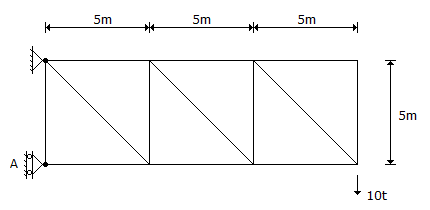Civil Engineering - UPSC Civil Service Exam Questions
Exercise : UPSC Civil Service Exam Questions - Section 19
- UPSC Civil Service Exam Questions - Section 14
- UPSC Civil Service Exam Questions - Section 27
- UPSC Civil Service Exam Questions - Section 26
- UPSC Civil Service Exam Questions - Section 25
- UPSC Civil Service Exam Questions - Section 24
- UPSC Civil Service Exam Questions - Section 23
- UPSC Civil Service Exam Questions - Section 22
- UPSC Civil Service Exam Questions - Section 21
- UPSC Civil Service Exam Questions - Section 20
- UPSC Civil Service Exam Questions - Section 19
- UPSC Civil Service Exam Questions - Section 18
- UPSC Civil Service Exam Questions - Section 17
- UPSC Civil Service Exam Questions - Section 16
- UPSC Civil Service Exam Questions - Section 15
- UPSC Civil Service Exam Questions - Section 1
- UPSC Civil Service Exam Questions - Section 13
- UPSC Civil Service Exam Questions - Section 12
- UPSC Civil Service Exam Questions - Section 11
- UPSC Civil Service Exam Questions - Section 10
- UPSC Civil Service Exam Questions - Section 9
- UPSC Civil Service Exam Questions - Section 8
- UPSC Civil Service Exam Questions - Section 7
- UPSC Civil Service Exam Questions - Section 6
- UPSC Civil Service Exam Questions - Section 5
- UPSC Civil Service Exam Questions - Section 4
- UPSC Civil Service Exam Questions - Section 3
- UPSC Civil Service Exam Questions - Section 2
31.
Which one of the following statements is correct ?
In a plane truss, influence line values
In a plane truss, influence line values
32.
In a 4 m wide rectangular channel with 0.8 m depth of flow, a sharp-crested weir of 2.5 m length with its sill 0.3 m above the channel bed is fixed symmetrically across the width of the channel. Taking the flow to be free but with end contractions, what would be the discharge neglecting approach velocity effect? (Take Cd = 0.625)
33.
A structural member carrying a pull of 700 kN is connected to a gusset plate using rivets. If the pulls required to shear the rivet, to crush the rivet and to tear the plate per pitch length are respectively 60 kN, 35 kN and 70 kN, then the number of rivets required will be
34.
In the cantilever truss shown in the given figure, the reaction at A is


35.
The degree of indeterminacy of the beam given in the given figure is


Quick links
Quantitative Aptitude
Verbal (English)
Reasoning
Programming
Interview
Placement Papers